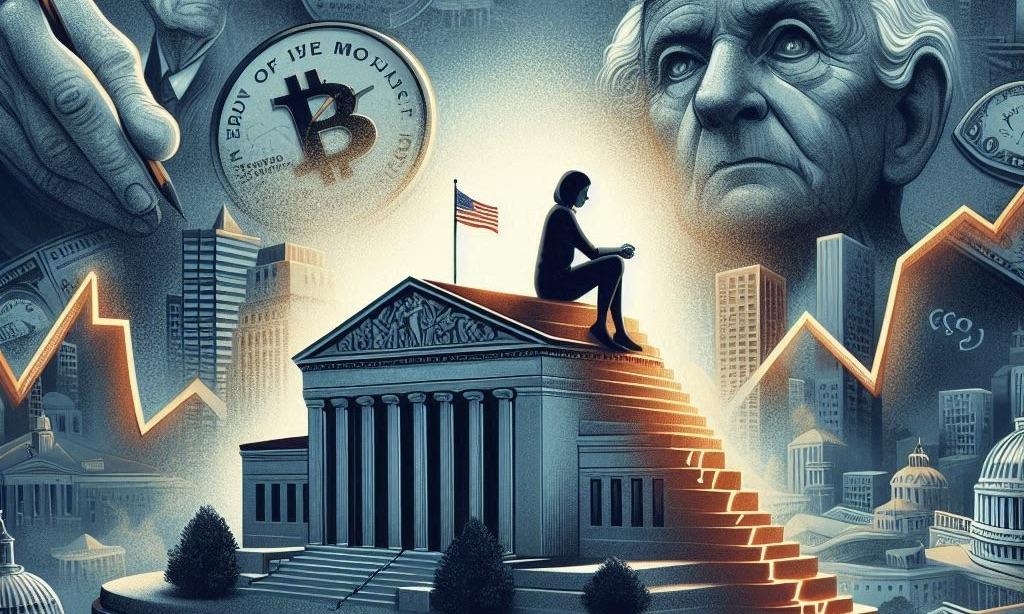With inflation cooling and the labor market slowing, the Federal Reserve is facing a pivotal decision this month on whether a modest interest rate cut will be enough to keep the U.S. economy expanding. Fed officials are divided, with some urging a more aggressive approach to avoid recession.
Fed Poised to Ease Tightening Amid Inflation Drop, Job Slowdown Sparks Debate on Rate Cuts
This month, the Federal Reserve is expected to begin unwinding its tightening campaign as inflation decreases and the labor market experiences a slowdown. The primary concern that policymakers are currently confronted with is whether a modest reduction in interest rates will suffice to maintain the economy in an expansionary state.
The monthly jobs report released on September 6 indicated that the hiring rate in the United States has slowed to its lowest level since the pandemic began in 2020, as it has moderated over the past three months. Nevertheless, the figures prompted investors to question whether Fed officials would choose to implement an excessive rate reduction during their meeting on September 17-18.
According to Diane Swonk, chief economist at KPMG, the release "sets the table for a heated debate"between officials like Fed Chair Jerome Powell, who are open to a broader cut to ensure the central bank doesn't fall behind the curve, and others who "are still waffling on a quarter point."
The consequences are substantial. During Powell's tenure, the Federal Reserve committed the error of acting too late to address the most severe inflationary episode since the early 1980s, thereby diminishing the purchasing power of American households. Unemployment may increase, and the economy may enter a recession if it proceeds inadequately at this time.
“Powell has got to be thinking about his legacy right now, and he’s really got to nail this soft landing,” Swonk said.
Fed Faces Tough Choice: Gradual Easing or Aggressive Rate Cuts as Economic Risks Mount
The decision that Fed officials must make—whether to progressively ease or front-load rate cuts—will be contentious, as is frequently the case during significant monetary policy turning points, per Bloomberg.
Some economists believe a more significant risk is associated with a cautious approach than pursuing an aggressive strategy, as most economic activity indicators are experiencing a downward trend. Rising joblessness can self-perpetuate rapidly as consumers reduce their expenditures, which leads to an increase in the number of companies that terminate employees. The unemployment rate increased by nearly a percentage point from its low point last year, triggering the "Sahm rule," a widely used recession indicator.
“It raises some serious questions, not just about this meeting, but over the next several months,” Chicago Fed President Austan Goolsbee said Friday on CNBC. “How do we make an effort to not have things turn into something worse.”
Job openings in July experienced their lowest level since the commencement of 2021, according to a separate Bureau of Labor Statistics report released on September 4. At the peak of the pandemic-era labor shortages, the ratio of openings to unemployed Americans reached as high as two to one. However, it has since returned to approximately one-to-one.



 Japan Inflation Holds Firm in November as BOJ Nears Key Rate Hike Decision
Japan Inflation Holds Firm in November as BOJ Nears Key Rate Hike Decision  Asian Markets Rebound as Tech Rally Lifts Wall Street, Investors Brace for BOJ Rate Hike
Asian Markets Rebound as Tech Rally Lifts Wall Street, Investors Brace for BOJ Rate Hike  Asian Fund Managers Turn More Optimistic on Growth but Curb Equity Return Expectations: BofA Survey
Asian Fund Managers Turn More Optimistic on Growth but Curb Equity Return Expectations: BofA Survey  Singapore Growth Outlook Brightens for 2025 as Economists Flag AI and Geopolitical Risks
Singapore Growth Outlook Brightens for 2025 as Economists Flag AI and Geopolitical Risks  Asian Stocks Edge Higher as Tech Recovers, U.S. Economic Uncertainty Caps Gains
Asian Stocks Edge Higher as Tech Recovers, U.S. Economic Uncertainty Caps Gains  Trump Orders Blockade of Sanctioned Oil Tankers, Raising Venezuela Tensions and Oil Prices
Trump Orders Blockade of Sanctioned Oil Tankers, Raising Venezuela Tensions and Oil Prices  Yen Near Lows as Markets Await Bank of Japan Rate Decision, Euro Slips After ECB Signals Caution
Yen Near Lows as Markets Await Bank of Japan Rate Decision, Euro Slips After ECB Signals Caution  RBA Unlikely to Cut Interest Rates in 2026 as Inflation Pressures Persist, Says Westpac
RBA Unlikely to Cut Interest Rates in 2026 as Inflation Pressures Persist, Says Westpac  South Korea Warns Weak Won Could Push Inflation Higher in 2025
South Korea Warns Weak Won Could Push Inflation Higher in 2025  New Zealand Business Confidence Hits 30-Year High as Economic Outlook Improves
New Zealand Business Confidence Hits 30-Year High as Economic Outlook Improves  Oil Prices Rebound as Trump Orders Blockade of Sanctioned Venezuelan Tankers
Oil Prices Rebound as Trump Orders Blockade of Sanctioned Venezuelan Tankers  BOJ Poised for Historic Rate Hike as Japan Signals Shift Toward Monetary Normalization
BOJ Poised for Historic Rate Hike as Japan Signals Shift Toward Monetary Normalization  Asian Stocks Slide as AI Spending Fears and Global Central Bank Decisions Weigh on Markets
Asian Stocks Slide as AI Spending Fears and Global Central Bank Decisions Weigh on Markets  Canada Signals Delay in US Tariff Deal as Talks Shift to USMCA Review
Canada Signals Delay in US Tariff Deal as Talks Shift to USMCA Review  Austan Goolsbee Signals Potential for More Fed Rate Cuts as Inflation Shows Improvement
Austan Goolsbee Signals Potential for More Fed Rate Cuts as Inflation Shows Improvement  EU Delays Mercosur Free Trade Agreement Signing Amid Ukraine War Funding Talks
EU Delays Mercosur Free Trade Agreement Signing Amid Ukraine War Funding Talks  Oil Prices Climb on Venezuela Blockade, Russia Sanctions Fears, and Supply Risks
Oil Prices Climb on Venezuela Blockade, Russia Sanctions Fears, and Supply Risks 































